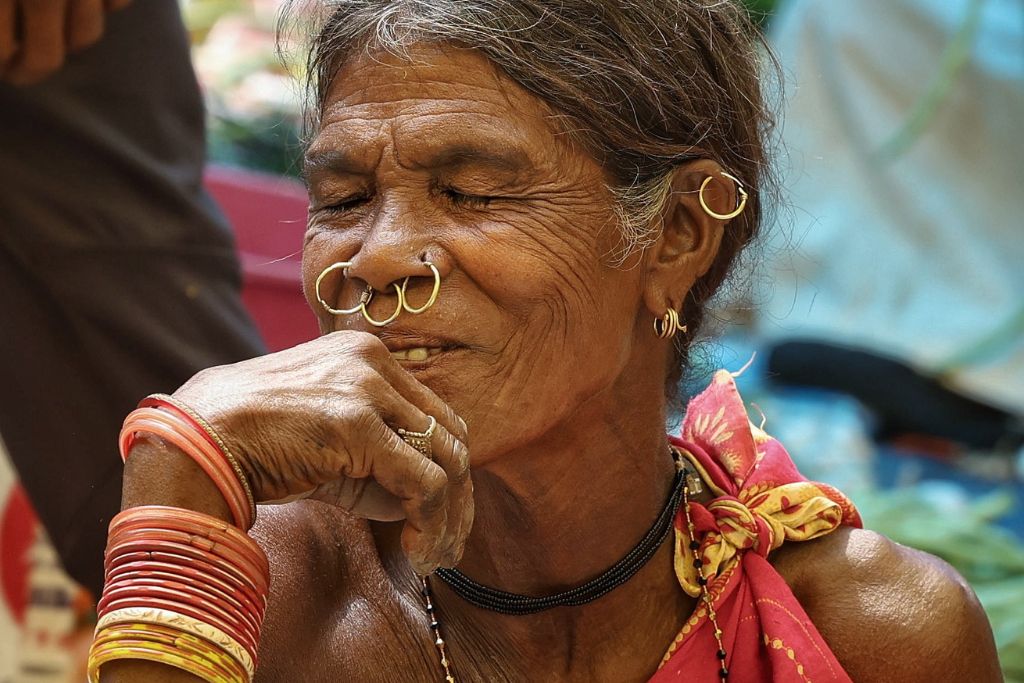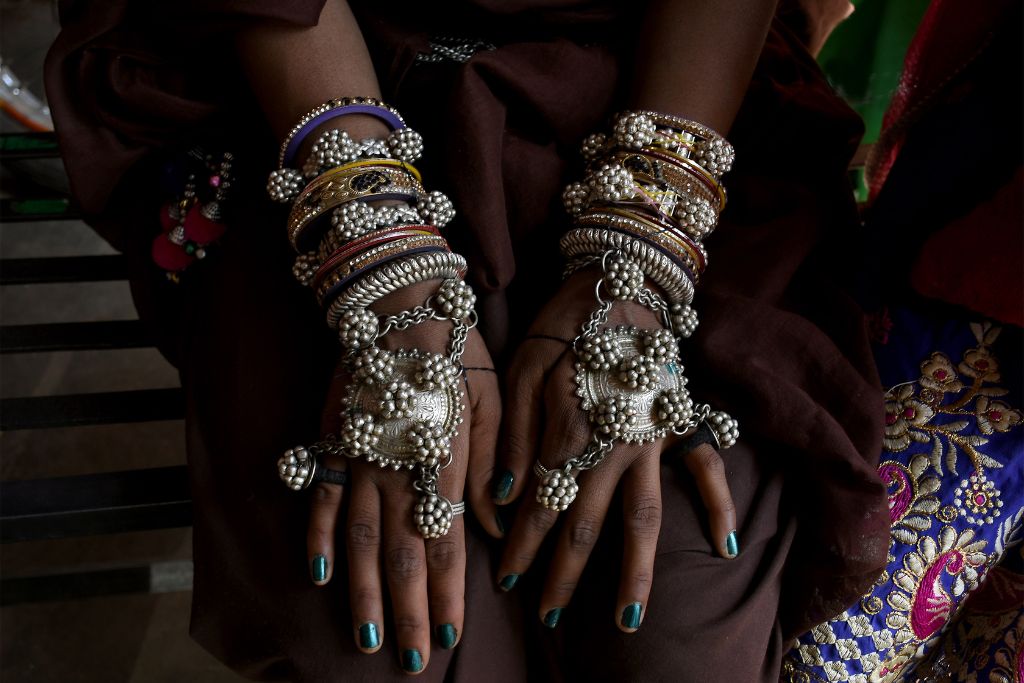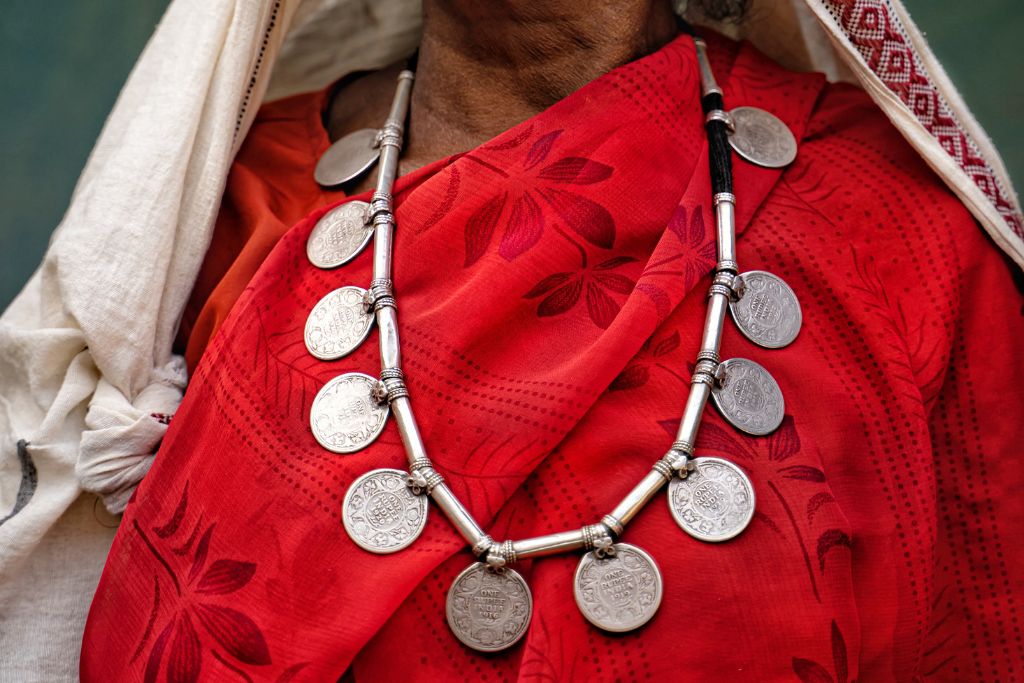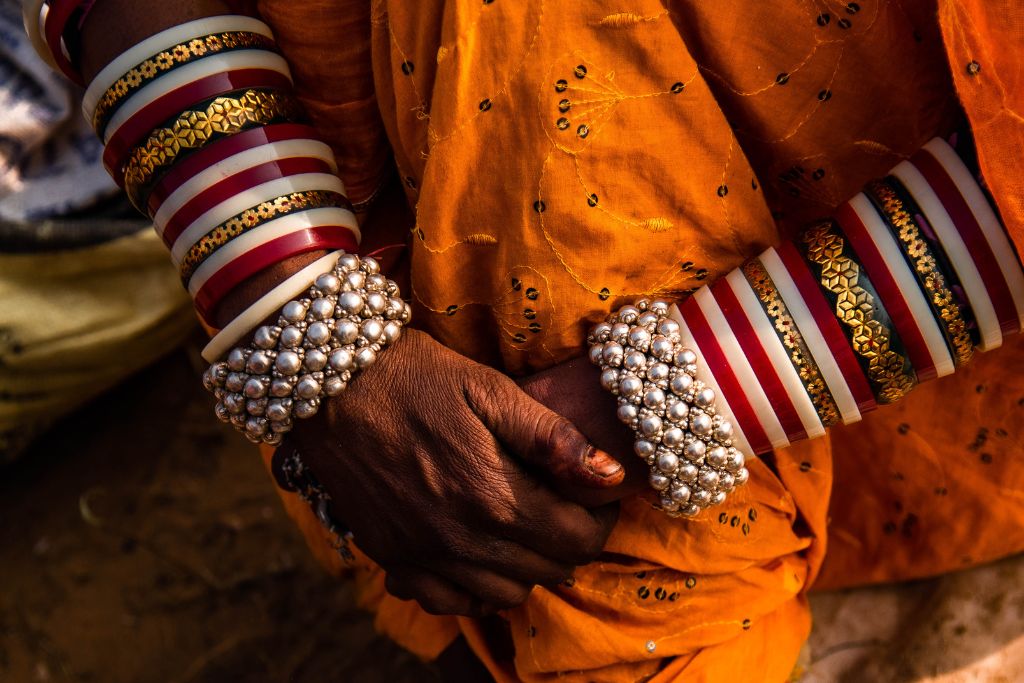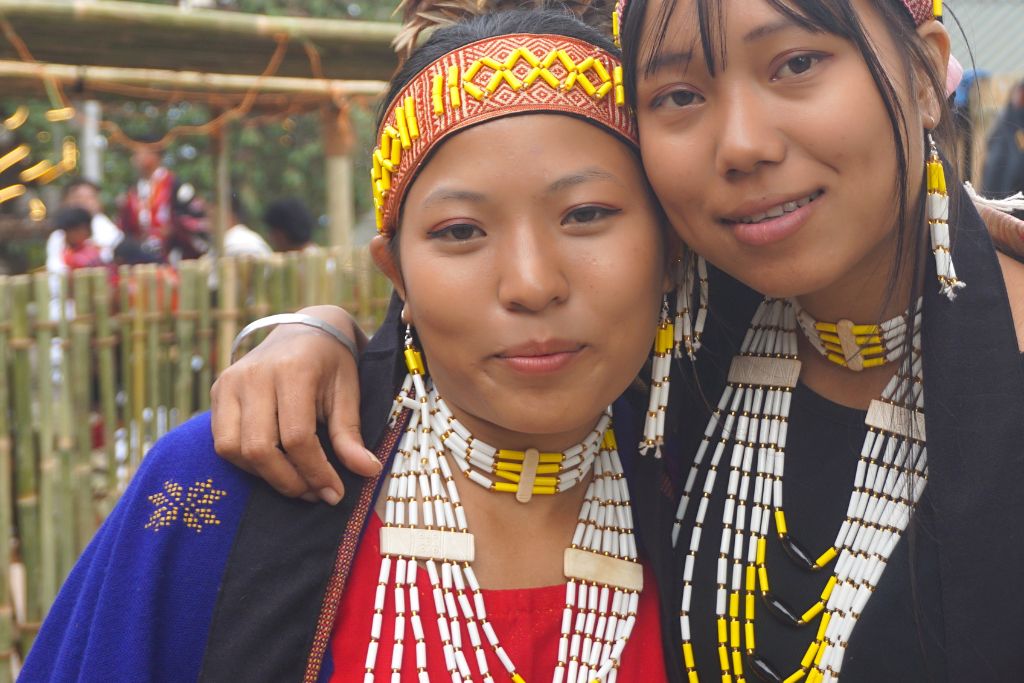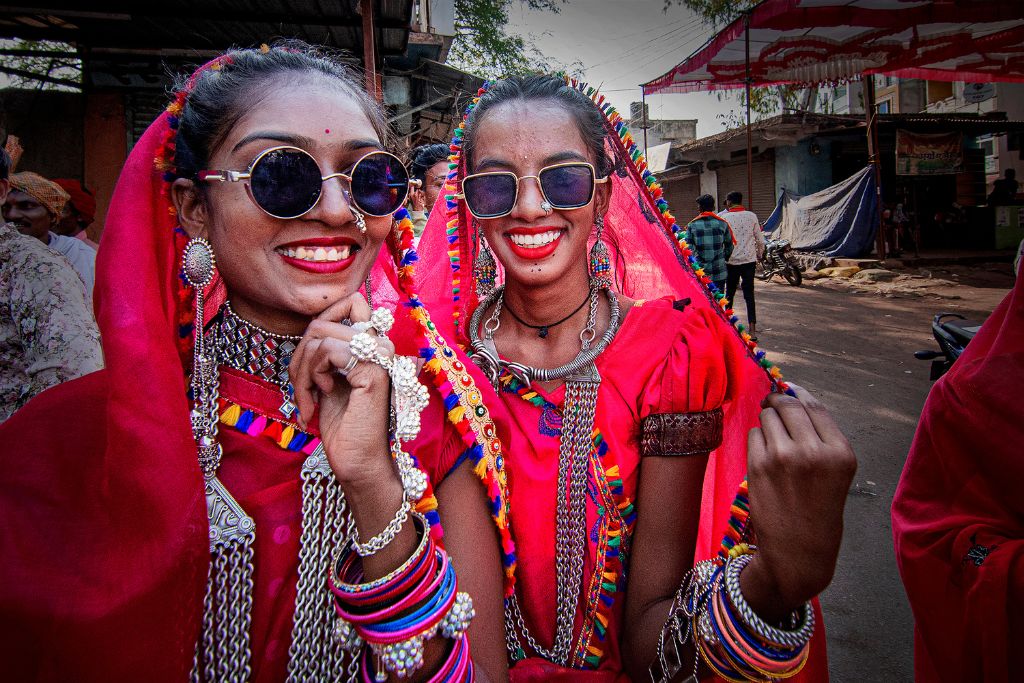Hansli
Captured in this image is a woman from Barwani, Madhya Pradesh, adorned in several ornaments like hansli (metal necklace), haath phool (hand harness), rupiya mala, traditional earrings and more. Crafted from silver, these jewellery items are largely worn during the Bhagoriya festival. The Hansli is a round traditional necklace made of silver or other metals, worn during auspicious occasions. It is among the classic statement pieces of tribal jewellery. (Photo by Pranab Basak)
Gold piercings
Piercings of the nose and ears have always been an integral part of fashion amongst the womenfolk in rural India. (Photo by Dr A V Ranganadham)
Haath phool
Haath phool, which translates to “flower of the hand”, is a widely loved ornament worn as a hand harness. This image displays a haath phool made of silver worn by a tribal woman from Alirajpur in Madhya Pradesh. Made with several delicate chains, connected to bracelets and rings, the ornament adorns the wrist and back of the palm. (Photo by Pravinsinh R. Chauhan)
Rupiya mala
This image depicts a lady from the Chhattisgarhiya community of Bastar Kanker, Chattisgarh. She is wearing a red saree complemented by a silver rupiya mala.
Old silver coins are intricately arranged and strung together to create this distinctive necklace. Its vintage dates back several centuries, when tribal folks of Bastar created this mala as a means of adornment and preservation of wealth. It reflects the cultural heritage and craftsmanship of Bastar, and also serves as a symbol of wealth of the wearer. (Photo by Vijaya Laxmi Thakur)
Sesephung
This piece of forehead jewellery is called sesephung. While its name translates to ‘bright flower’, it is designed in the moon’s shape. Made with coral, it is worn by Limbu women, one of the Nepali tribes who also reside in Kalimpong. Limbu women are known for their striking gold jewels, whose designs are mostly inspired by nature. (Photo by Prayesh Chhetri)
Traditional jewellery
This image captures traditional jewellery worn by tribal women in Rajasthan. While the items have varied names in different rural dialects, the woman can be seen wearing kangans (bangles), bichhiya (toe-rings) and thick anklets called kada. These items are made of metals like gold and silver, while bangles are also popularly crafted with lac. They also serve as essentials for a traditional bridal look. (Photo by Shweta Khetan)
Naga bead necklace
These college students of Kohima are proudly dressed in their famous traditional headbands and bead necklaces. Jewellery is an important part of Naga identity, with both men and women of tribal communities flaunting their traditional ornaments. Various Naga tribes can be identified through the type of earrings, necklaces, anklets and belts they wear. These items are made of a variety of materials like glass beads, coral, carnelian and ivory to name a few. (Photo by Aishwarya Lodha)
Contemporary accessories
Featured in this vibrant picture are two tribal girls from Barwani, Madhya Pradesh, wearing bright pink outfits complemented by silver jewellery. The look is completed by the girls sporting sunglasses, which contrasts nicely with their traditional look. (Photo by Pranab Basak)
The lead image at the top shows a woman from Odisha’s Bonda tribe, wearing neckbands crafted from solid silver. These neck bands are typically thick and heavy, emphasising the wearer’s status and cultural identity. The more elaborate and heavy the neckband, the higher the status of the wearer. (Photo by Kishore Das)


